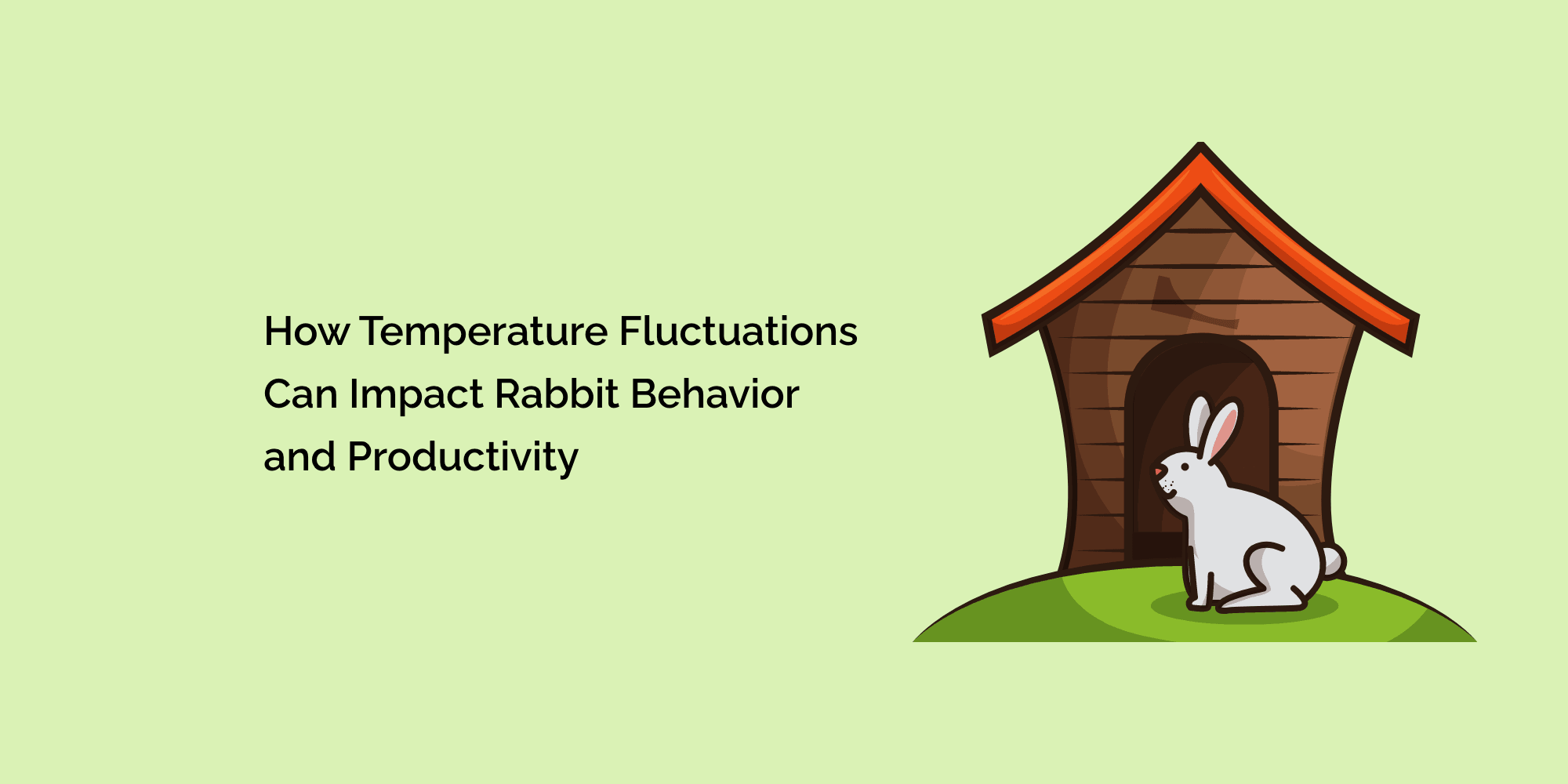Rabbits are delightful and sensitive creatures that thrive in environments with stable temperatures. As temperature fluctuations occur, rabbits' behavior and productivity can be significantly affected, influencing their overall well-being and productivity.
In this comprehensive blog, we will delve into the impact of temperature changes on rabbit behavior and productivity, the reasons behind their reactions, and practical strategies to help mitigate the effects of such fluctuations.
Understanding the Influence of Temperature on Rabbits
The Physiology of Rabbits and Temperature Regulation
- Explanation of how rabbits naturally regulate their body temperature.
- Unique physiological traits that make rabbits sensitive to temperature changes.
- How external temperatures impact rabbits' internal body functions.
Recognizing the Optimal Temperature Range for Rabbits
- Defining the ideal temperature range for rabbits' comfort and productivity.
- The impact of temperature extremes (hot and cold) on rabbit behavior and health.
- Understanding the threshold for heat stress and hypothermia in rabbits.
How Temperature Fluctuations Affect Rabbit Behavior
Impact of Heat on Rabbit Behavior
- Identifying signs of heat stress in rabbits, such as excessive panting and restlessness.
- How high temperatures can lead to decreased activity levels and reduced appetite.
- Understanding aggression and territorial behaviors that may arise due to heat-induced discomfort.
Influence of Cold on Rabbit Behavior
- Recognizing signs of hypothermia, including shivering and huddling together.
- Impact of colder temperatures on rabbit movement and energy levels.
- Behavioral changes in response to cold stress, such as decreased grooming and social interactions.
Effects on Reproductive Behavior and Productivity
- Exploring how temperature fluctuations can impact breeding behavior in rabbits.
- How extreme temperatures affect reproductive success and litter size.
- Implications of temperature-related stress on fertility and gestation periods.
Strategies to Mitigate Temperature-Related Behavioral Changes
Maintaining the Optimal Temperature Range
- Best practices for regulating temperature in rabbit enclosures or barns.
- The role of proper insulation, ventilation, and shade provision in maintaining a stable environment.
- Using temperature monitoring systems to respond quickly to temperature fluctuations.
Offering Comfortable Nesting and Shelter Options
- Importance of providing cozy bedding materials to help rabbits regulate their body temperature.
- Designing sheltered areas to protect rabbits from extreme weather conditions.
- Utilizing natural elements like burrows for outdoor rabbits to seek refuge.
Water and Nutrition Management
- Ensuring access to fresh water and a balanced diet during temperature fluctuations.
- Seasonal variations in dietary requirements and adjustments to meet rabbits' needs.
- Strategies to encourage rabbits to eat and drink adequately during extreme temperatures.
Behavioral Enrichment and Social Interaction
Enrichment Activities for Hot Weather
- Providing cooling options, such as chilled water bottles or ice packs, to keep rabbits comfortable.
- Interactive toys and frozen treats to engage rabbits mentally and physically during heatwaves.
Enrichment Activities for Cold Weather
- Offering opportunities for exercise and play in sheltered areas during colder temperatures.
- Providing nesting materials and socializing opportunities to reduce stress.
Stress Management and Health Considerations
Recognizing Signs of Stress in Rabbits
- Understanding behavioral and physiological signs of stress in rabbits.
- The importance of stress management to promote overall well-being.
Seeking Veterinary Care for Temperature-Related Health Issues
- Knowing when to seek professional veterinary assistance for rabbits experiencing temperature-induced health problems.
- Preventive measures and timely treatments for temperature-related ailments.
Conclusion
Temperature fluctuations can have a significant impact on rabbit behavior and productivity. By understanding the physiological responses of rabbits to temperature changes and implementing effective strategies, we can ensure their comfort and well-being throughout the year.
Responsible rabbit care involves proactive measures to mitigate the effects of temperature extremes and creating a nurturing environment that supports their natural behaviors and social interactions. By prioritizing their welfare and health, we can enhance their productivity and enrich the lives of these beloved companions.








